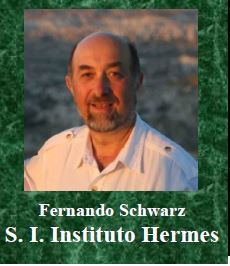“Despreciando el lenguaje de signos que hablan a la imaginación, hemos perdido el más poderoso de los lenguajes”. J. J. Rousseau.
 Ernst Cassirer nos recuerda que el hombre no vive en un universo puramente material, sino en un universo de significado y valores, los cuales organizan su representación simbólica de sí mismos y del mundo. A pesar de la secularización de nuestras sociedades contemporáneas, el arcaico trasfondo simbólico del ser humano no ha desaparecido y la dimensión de lo sagrado se encuentra hoy en día oculta en nuestras prácticas cotidianas.
Ernst Cassirer nos recuerda que el hombre no vive en un universo puramente material, sino en un universo de significado y valores, los cuales organizan su representación simbólica de sí mismos y del mundo. A pesar de la secularización de nuestras sociedades contemporáneas, el arcaico trasfondo simbólico del ser humano no ha desaparecido y la dimensión de lo sagrado se encuentra hoy en día oculta en nuestras prácticas cotidianas.
El simbolismo es una de las competencias ocultas del poder. Los símbolos de una nación son una verdadera clave para descifrar un sistema político y social. El pasado 15 de abril, cuando las llamas surgieron alrededor de la flecha de Notre Dame de Paris, muchos sentimos como una parte íntima de nosotros mismos se incendiaba y también un aspecto de nuestra representación del mundo. Este evento impensable, asombroso, provocó el sentimiento de experimentar una falla temporal, que suspende lo cotidiano y produce un desgarro que nos arranca de nosotros mismos y nos deja sin voz frente a la inconmensurabilidad de las perdidas. La importancia simbólica y espiritual de Notre Dame de Paris, surgió repentinamente como un relámpago tanto para los creyentes como para los ateos. Todos sintieron que más allá de los hechos materiales se escondía una llamada del destino.
Hanna Arendt decía que los monumentos constituyen la patria no mortal de los seres mortales, ese mundo común de los vivientes y los muertos que constituyen las raíces de nuestras propias identidades. La catedral de Notre Dame se sitúa en el corazón de la geografía sagrada del poder, establecida desde milenios en la Isla de la Cité. Ella sintetiza la identidad secular de Francia, que reúne a la vez la transcendencia, la monarquía y la revolución. La emoción producida por el descubrimiento en los escombros del gallo (símbolo de la Republica) que tronaba en lo alto de la flecha, por encima de la cruz, y que portaba una de las espinas de la corona del Cristo, testimonia la fuerza de su poder simbólico e identitario.
Es interesante constatar cómo esta sociedad que ha ocultado lo sagrado, ante la pérdida de un monumento como Nôtre Dame, toma conciencia de lo que está desapareciendo y se une más allá de las diferencias en una profunda emoción que incita a su renacimiento. A nivel antropológico, esta categoría de emociones suscitadas por una catástrofe que marca el apego, consciente o inconsciente, a valores estéticos históricos espirituales se denomina “emociones patrimoniales”. Alrededor del monumento hay una forma de sacralidad que en el caso de esta catedral es laica y religiosa. Como dicen las antiguas enseñanzas, desde las cenizas surge el fénix del renacimiento. La comprensión del patrimonio de la humanidad, y su aporte a la identidad como matriz regeneradora del presente y constructora del futuro, continúa siendo una de las líneas esenciales del Instituto Internacional Hermes.


